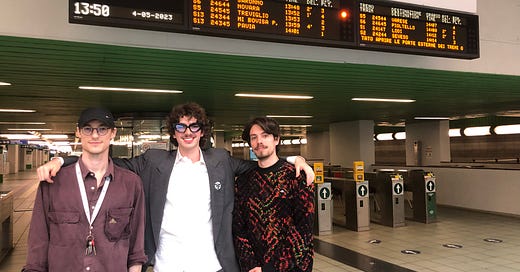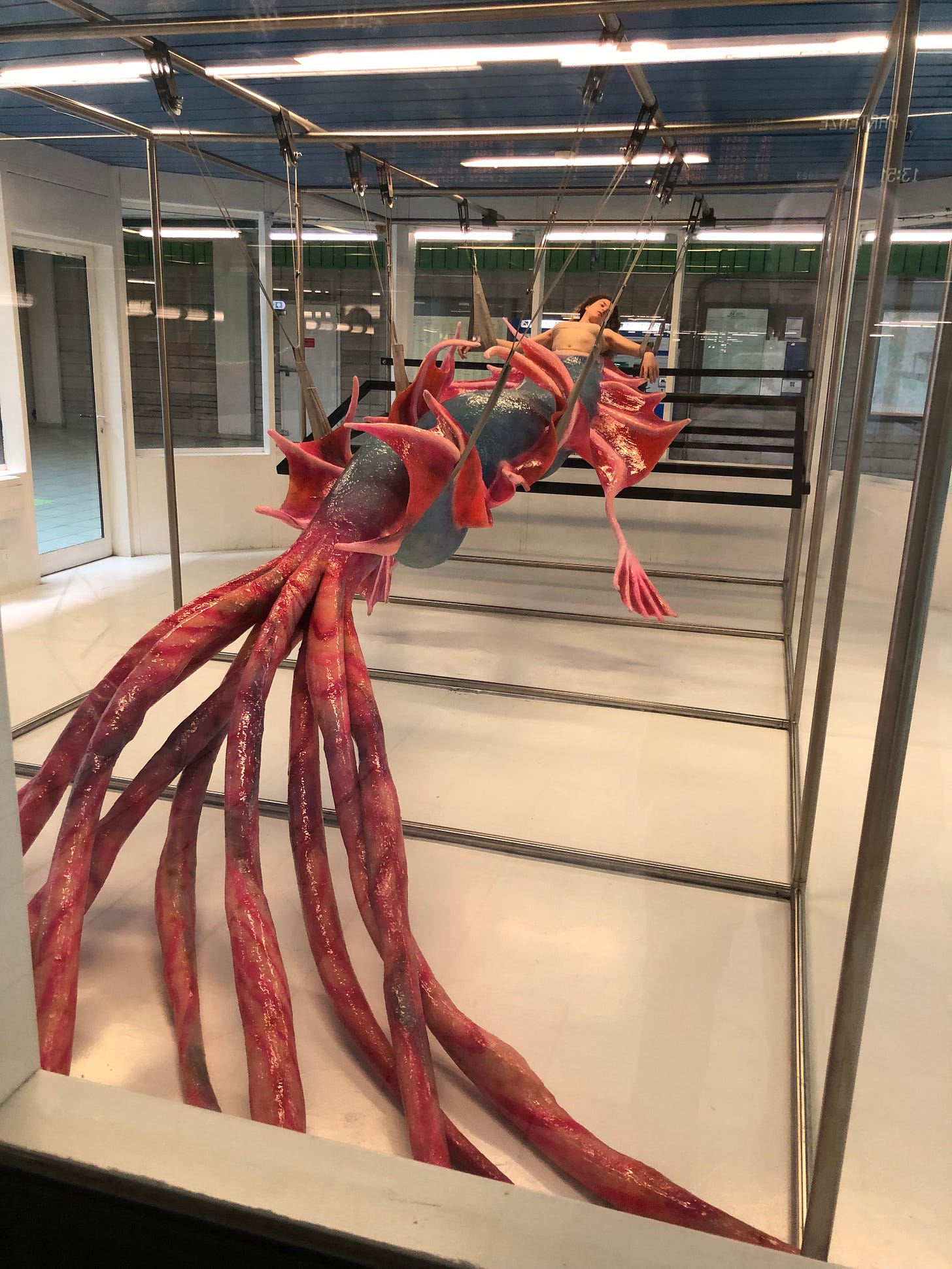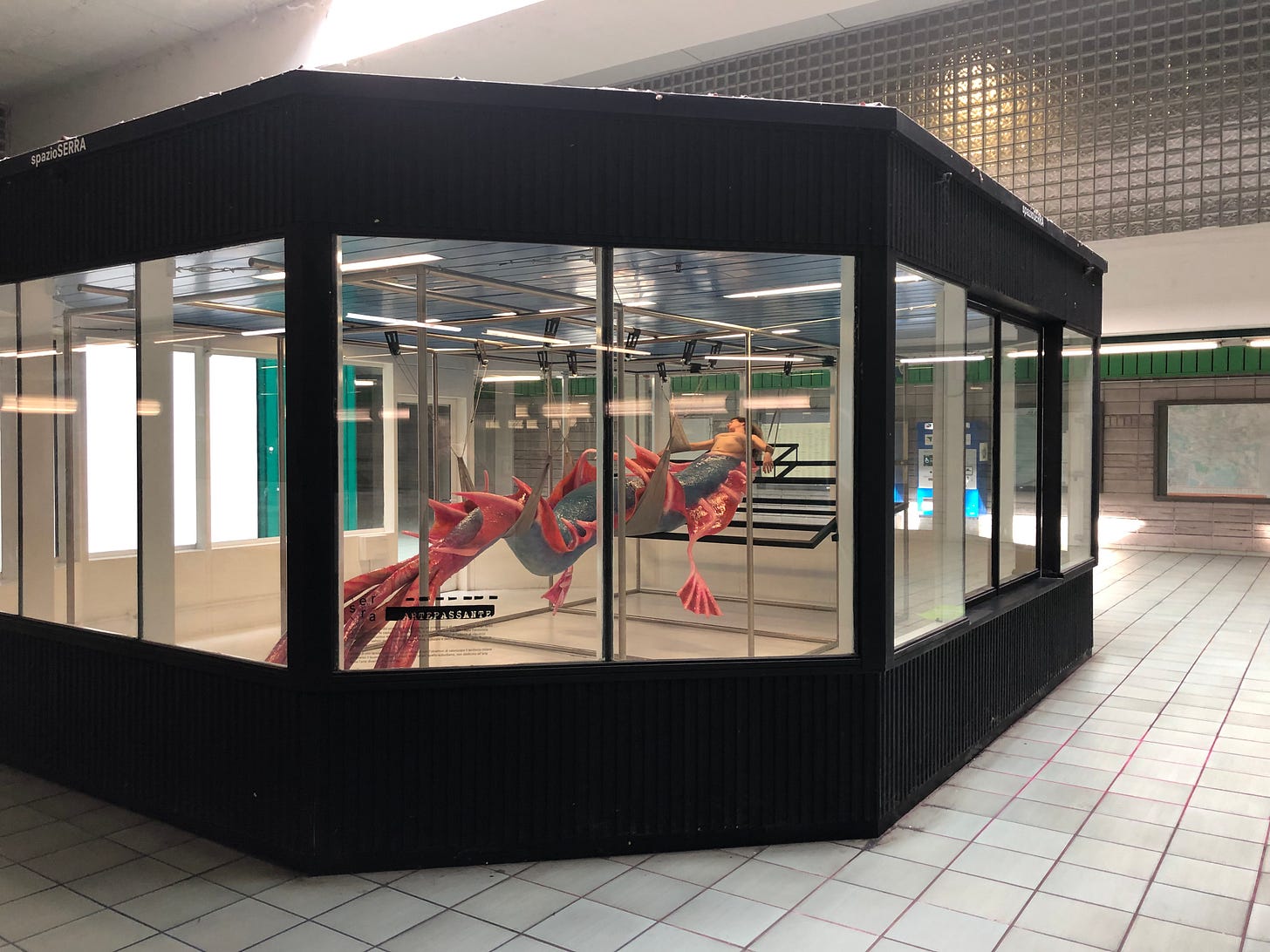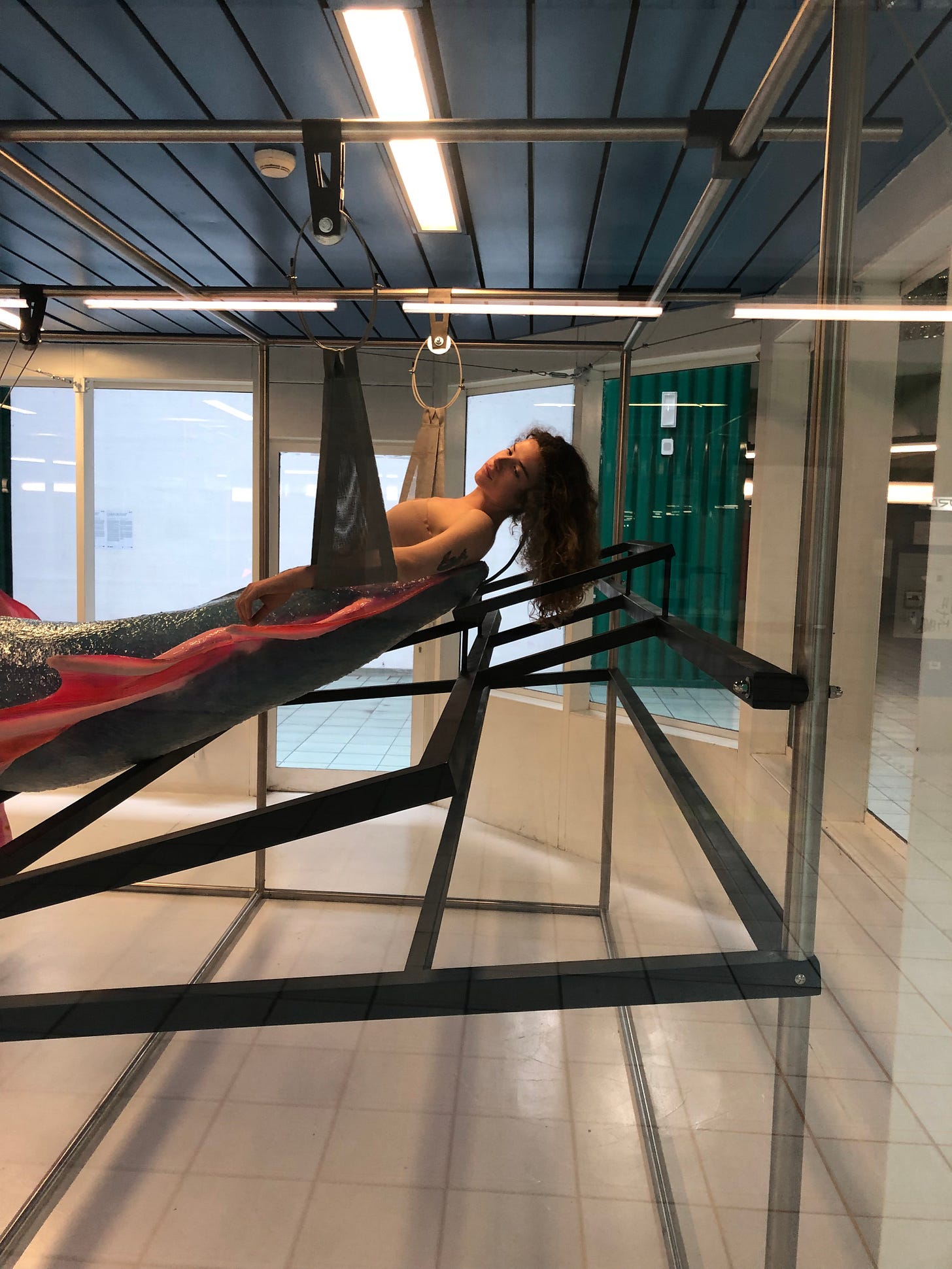Milan, Italy: Even train commuters are entitled to art, but what’s with the, the . . . mermaid?
Seven-meter-long Agnes is a head-turner opening day. Two Romans and an American teenager give her company 12 hours daily
Agnes showmen, L-R, Tommaso de Benedictis, Silas Silverman-Stoloff and Arturo Passacantando at Milan’s Lancetti railroad station, where a mysterious creature rests beyond them.
Like a siren belonging to Greek mythology, a “she” on the north side dares Milan commuters to take a peek.
Her name is Agnes, and she might be—it’s anyone’s guess—a mermaid undergoing a transition into a giant squid.
“It doesn’t seem like a true mermaid,” says Luca Franzoni, 28, an advertising-industry employee en route to work after exiting Lancetti railroad station, where the seven-meter-long (23 feet) sculpture is turning heads on opening day, with evening drinks beside Agnes highlighting the agenda.
Agnes Questionmark was made in Rome but is on a tour of sorts.
Her genesis and evolution are up to interpretation.
“It does seem like a monster. Not all transformations can be perfect, but it makes you reflect on the possible future.”
On display until May 19, the exhibit is outside the turnstiles and walled off within a glass hexagon, used by the arts group spazioSerra, which provides suitable open spaces across the city for creative works. Also billed as a “performance,” the show is officially called CHM13hTERT.
The hexagonal art space within Lancetti station, not the most romantic of settings.
Off to the side are two Romans who speak wickedly good English, as well as an American with rouge-tinted cheeks. They themselves seem to be in a state of metamorphosis, traipsing from one city to the other. This much is known: Milan is not Agnes’ home. She’s time traveling from Rome to London to Milan and back again, with a chance at New York City. Or has she already been through a parallel universe?
Agnes has a pretty face, but her tentacles might be viewed as grotesque. That’s part of the deal, says Arturo Passacantando, 30, one of her two curators.
“What happens if if we mixed our genes with other creatures?” he hypothesizes. “She’s an embracement of transformation and adaptation.”
For starters on her transition, look to post-World War II abstract painter Agnes Martin.
“(Martin) changed her name,” says Passacantando, alluding to Questionmark, her last name. “Agnes was attracted to take meditation into her design.”
Agnes possibly meditating
The three friends tie in the art work’s provenance to art, science and mysterious fertility—but not quite on the same level as in “Dead Ringers,” the provocative TV miniseries.
Her conception can be traced to the stomping grounds of emperors Caligula and Claudius. In the eternal city of Rome, Passacantando and friend Tommaso de Benedictis, 31, would as teens work out their artistic dreams, seen in Agnes, who rose to life eight months ago in a studio outside Rome.
“Together, we’re called The Orange Garden, named after a park in Rome where we would hang out and talk about life,” says de Benedictis, Agnes’ other curator. He was born in Manhattan, grew up in Rome and lives in London.
Who exactly is Agnes Questionmark, the silicon creature from the deep? One thing’s likely: Based on her curators’ use of feminine pronouns, she is part woman—for the moment.
“I would say she’s a post-human trans species,” says Passacantando, interacting with curious commuters gawking at Agnes.
Agnes’ on-hand designated “assistant,” Silas Silverman-Stoloff of South Orange, N.J., expands on her genesis.
“She’s genetically engineered,” says Silverman-Stoloff, 19, who first spoke to the Italian curators on Zoom and later met up with them in London, Geneva and London.
The young trio, who would fit right in to hip north Brooklyn, are not exactly sure whether they can make a living off art through life. Standing one next to the other, they spit-fire at the future:
“Yes.”
“It’s difficult.”
“Can we?”
“That’s a great question.”
“If you sacrifice a life.”
“What’s a living?”
Just go ask Agnes.
-30-









Very European! Public art here in the U.S. seems to usually be rather boring outdoor metal or stone sculptures.